- Home
- Chris Wraight
The Lords of Silence Page 18
The Lords of Silence Read online
Page 18
Agripinaa has done this for longer than the Imperium itself has endured. The ziggurats were raised in the forgotten Age of Strife, long before the Traitors made their pacts, long before there were Traitors, long before the first foundations of that secret throne room were delved under the warring crusts of Terra. On Agripinaa there are secure vaults, lost under rad-stained sands, containing flaking paper blueprints from the dawn of the human age. Some of these vaults are lost even to those who still inhabit the world, for the accretions of the long, long years have buried so much in forgetfulness. There are whole cities lost on Agripinaa, smothered by later frenzied constructions, plundered for their resources before being allowed to steadily erode into the substrates of the old continents as the endless, metronomic activity continues far above them.
It would take a baseline human a week to travel from the highest exhaust vent down to the lowest coolant sink, clambering down the soul-crushing press of girders and pylons and into the gaseous depths. Not that an unaugmented human would survive the journey – Agripinaa was long ago made extravagantly toxic, its atmosphere turned to poison gas and its aquifers acidified. On Agripinaa, the augmetics start from the birth pods – infants yanked from gurgling metal wombs, their heads branded and their blood drawn. Every scrap of flesh is shaped, stamped, wired up and clamped down. Their lungs are made able to process the atmospheric poisons, their eyes made capable of withstanding the flares from the forges, their fear centres tugged out, their endocrine systems tailored for whatever drone function Agripinaa demands of them – obedience, aggression, endurance.
Agripinaa has weathered storms before. The sector was ravaged in past centuries, the so-called twelve Black Crusades of the Imperial loremasters, each time more severe than the last, each time requiring more strenuous efforts to rebuild, to bear down on non-conforming elements, to purge datasets and binary-sinks. It has always recovered. It has always covered over the wounds with freshly-poured rockcrete. It has always built greater manufactoria where the old ones were annihilated. This was necessary. Without Agripinaa, Cadia would be starved of its machines. Without Agripinaa, the other worlds would be naked and defenceless. This is the place that gives them teeth. Thus, by necessity, it has been marked for destruction.
Agripinaa has been under attack for a long time already. Plagues have been thrown at it, carried on hulks vomited up from the Eye’s turbulent borders. Hordes of shambling dead have clogged its vents and its cog clusters. Rogue tech-priests have damned what remained of their souls by destroying critical systems and jamming integral works. One third of the great command ziggurats have gone dark, their innards seething with civil conflict. Agripinaa’s daughter worlds – its supply depots and its Naval dockyards – are all aflame now, grappling with the sudden emergence of suicide squads and activated sleeper units.
That was just the start. The softening, the tenderising – it was all that could be done from afar, all that could be accomplished without breaking the Gate’s wards and sending physical warfleets to truly summon the apocalypse.
Now the fleets are here. This is Agripinaa’s reality. The first alerts sound on system-edge, prompting an immediate response from stationed void assets. Imperial Navy attack groups race to intercept, bolstered by the colossal shadows of the Basilikon Astra’s heavy maulers. Space Marine strike cruisers dart from under those lumbering giants, their flanks coloured in the livery of a dozen Chapters. Defence plates activate, their concave summits sliding back to reveal nova cannons and system-class disintegrators. Whole maniples of skitarii mobilise, their spine-clusters spiked into activation, their viewfinders whirring up to bottle-green luminosity. From deep within Agripinaa’s iron guts, shutters grind back from the maws of silo-temples, and the god-machines of the Legio Praesidium Vortex emerge from their deep tombs, war-horns echoing across the burning metal plains.
And yet they can have no idea. Somewhere, deep within all those ruthless logic-minds, bled of emotion and dread, they must still see what comes from them out of the Eye’s lightning-raked skirts, and be daunted. Their oculi whining to gain focus, they must look up at the skies and struggle to comprehend what has taken place, and feel the coldest flicker of doubt.
What they see has no precedent. What they see has no explanation. What they see has no rational basis, for hell’s borders have been shattered, its fetters thrown off, and the vengeance of the damned now spills across realspace.
The moment can only be fleeting. It all happens so fast. The flames are like a breaking wave, the daemon screams like shattering crystal, the massed thrusters like the ignition of new stars. There are so many. So, so many.
Thus it begins.
Solace thunders into range, flanked on either side by fast-attack craft of the World Eaters and Night Lords Legions. The orbital zone around it is half void, half flying debris, clotted with shrapnel since the destruction of the outer orbital defence stations. Molten pieces clang and bounce from the ship’s outer shielding, spinning madly before being engulfed in fresh walls of plasma and thruster burn.
Everything is in perpetual motion, a whirl of confined cause and effect. Giant warships sweep across the reeling visual plane, each one sucking in clouds of smaller craft. Wings of gunships and void-fighters streak and duck through flashes of las-fire. The burning planet’s surface rolls below them, swinging lazily as if stuck on a pendulum, its torment caught in glimpses within the tumble and plummet.
Vorx is standing on the command bridge, calculating, assessing, issuing an order every so often and watching the grand display unfold across his many picter lenses. Explosions pepper the forward augurs, rolling silent flowers that bloom and fade and are then dragged out into dying slivers. The deck shakes as the big guns fire, belching acid bombs into the oncoming prows of Imperial war vessels.
Solace’s weapons are old. Some were forbidden even in the earliest days of the Crusade, while others have been slowly made blasphemous by the corruption of the Neverborn. Some fire solid rounds, others ghost-green las-blasts, but most are more imaginative – phosphex and corrosives, metal-gnaw and bone-rot, core-decay and fuel-spoil.
The ship tilts leeward, hit by a brace of burrowing torpedoes, its hide ripped and venting. Vorx directs return fire, gently nudging Solace’s own inclinations, and a withering slamline of adamantium-eating canisters spins out into the void. The impacts are void-silent, clouts of lime-yellow puffs strung along the flank of a Cobra-class destroyer. Only moments later the destructive agents do their work, chewing through armour layers and rupturing a generator feed-line. Vorx has already ordered Solace on to new targets by the time the Cobra’s outer skin is blown and its atmospheric controls are smacked out of tolerance. It falls away, easy prey now for the swarms of mid-range killers sweeping up in Solace’s wake.
Vorx has his mind on greater things. Amid the crash and the shatter, there are true monsters in the herds, sentinels that must be eliminated if the landings are to be effected. He sees the Slaverer, a World Eaters battleship, smash its way into close contact with The Throne’s Divine Demands, a Retribution-class ship of the line, and that titanic clash is beyond him. He sees a squadron of Navy cruisers in close formation batter an incoming wedge of Murder-class skirmishers, and that entire sector of the battlesphere erupts into dazzling pyrotechnics. There are a thousand individual struggles here, all combining to form the immense conflagration that stretches far across Agripinaa’s tortured horizon, reaching out like some giant, single, flickering claw to clutch the forge world and tear it from existence.
‘That one,’ he whispers, picking out a blip on the overloaded sensor wheels, a dab of phosphor amid a speckle of a hundred other targets.
Hovik is already working to bring them in close. Rhoe Twe drags up a little more power from straining plasma coils. Drez-Uil, shackled now to his greasy panopticon throne, shouts out vectors that the servitors mumble and transmit down to implementation decks.
Vorx is alone on the high bridge.
The rest of the Unbroken are preparing for their own battles – the tight-locked thrust of boarding actions or the hurtle down into planetfall. He knows Dragan will be goading the gunnery teams before making for the torpedo bays, grinding a little more from them. He thinks that Garstag is making ready for teleportation but has not yet detected his locus, which is strange, but there is so much going on that he cannot attend to it.
‘That one,’ he says again, reaffirming it, marking it, making it his own.
It is a mass conveyer, a huge carrier, lightly armed but with steep-sided armour plates and a heavy profile. It is bigger than Solace, approaching battleship size, but clumsy and slow, and lacking major armament. Squadrons of frigates, all in Mechanicus red, shoot alongside it as it powers up from Agripinaa’s orbital dock layer, building up to escape speed through the burning wreckage.
Such a thing is not a major target for the assault commanders. It is clearly running from combat, shepherded out by its escorts, seeking refuge from the maelstrom’s heart before the orbital zone is overrun. Thus it is being ignored, for there are a thousand true attackers driving straight at the invaders, their lances spitting and their broadsides roaring. As the battle thunders over the forge world’s glowing edge, the surviving orbital stations open up in a combined salvo, sending waves of armour-battering ordnance screaming out of recoiling macro-barrels. It is overwhelming, computationally complex, unfolding across the full gamut of all three dimensions. There are thousands of things to be concerned about. Thousands of more lethal things.
This one ship, though, intrigues Vorx. He has fought the soulless disciples of the Machine-God many times and has learned their ways. They do not retreat from forge worlds. They do not send their assets out into the void for another, better day. In combat such as this, where their pride and industry are threatened with annihilation, they use every last one of their ships, all their guns, all their dreary, flesh-stripped troops. Even if that mass conveyer only carried a scattering of lascannons and was chock-full of inert cargo, it would still be sent howling into the heart of combat and used, if for nothing else, to soak up incoming fire while the greater Ark Mechanicus battleships dealt out the true pain.
So something does not ring true. Perhaps the World Eaters are too distracted by their blood-frenzy to notice it, and maybe the warpsmiths of the Black Legion are so intent on getting down to the surface that they are overcommitting. This is not a tactical weakness Vorx possesses. He does not really hate this enemy – it is rare for him to hate – and he has never hurried an advance in his life. So he has the luxury of study, of reflection, and sees that a mass conveyer of the Basilikon Astra has no place being there at all.
‘All fire concentrated on the prow,’ he orders, noting with satisfaction how smoothly Solace turns into the attack trajectory and how solidly it is absorbing the constant barrage of incoming las-fire from many fronts. The armour on the ship is like a layer of rotting fat, sucking and dissolving the hits that come in, making the ship absurdly but agreeably resilient.
Solace picks up a little more speed, now powering close to its optimal velocity, booming through the crowded battlesphere and crunching through the thickets of lesser craft. Its sides flash and flicker with a constant hammer of close-range fire, picking off the gunships and boarding torpedoes sent to intercept it. Kodad is doing well, surrounding Solace with an aura of well-aimed destructiveness. A Naval battleship in the middle distance briefly locks on to them, causing warning runes to scroll across the picters, but it is almost immediately engaged by a World Eaters strike cruiser hurtling along at ramming velocity, and the two of them fall into bloody close-contact mauling.
The mass conveyer powers on. Its escorts recognise the danger and swing in closer. Solace takes hits – serious ones, ones that might drive deep under all that fat and damage something critical.
‘Ignore it,’ Vorx says. ‘Concentrated fire, main power to the lances.’
It is getting rough. They are getting knocked hard, and the void shields crackle and buckle. The frigates spar like enraged insects, cutting down further, but Solace just barrels closer, drinking the hatred up, dulling it, blunting it, slowing it all down. The ship’s structure flexes, indicating that core power has been shunted aforeships, burning down the conduits to the lance generators.
The mass conveyer is still running on its old course, a huge hunk of red-flaked metal carrying the eroded sign of the Mechanicus on its facing armour. Vorx studies it – immense side-plates, tall as hive spires, big aft-slung burners sending crimson plasma coruscating out into the shrapnel-flecked vacuum, tiny viewport lights at the very summit of a rear-mounted command bridge. It is a brute, a grim pile of undistinguished slabs designed with no sense of the organic or the mortal. It is the work of those who have let their spirits go cold, and such construction does not deserve to endure in this galaxy of wonder.
Kodad lets loose, and the first lance-beam arcs out from Solace’s prow array, wreathed in spitting fronds of pale-green plasma. The beam strikes true, smacking into the conveyer’s snub-nose and splashing messily over the void coverage.
‘Again,’ says Vorx, bracing himself as more hits come in. Other ships are responding now – Imperial vessels, Mechanicus vessels, Legion vessels. It is still a whirling madness out there – ships sliding across other ships, fire barrages searing across the void and blowing augur nodes, fighter wings burrowing into every cranny between the rolling behemoths – but through it all, the conveyer drives its straight path, edging closer to wherever it was ordered to be.
Its bow-plates begin to crack open. Just a trace at first, a line of fire down the long snub-nose, then a vent of gases and a haul of metal. Vorx allows himself a half-smile. Something has been hidden in that ship, warded by nondescript armour designed to protect Titans during transit. Now it is being revealed, forced into the open, a hand exposed before its time.
Solace fires again, scores another hit, this time striking at the join between moving panels. The liquid energies cascade through the opening gaps and corrode through to softer materials beyond. The conveyer barely flinches, but damage has been done – Vorx detects void-shielding harmonics ramping up, and his augurs isolate violent power shifts across the giant’s energy lattice.
The conveyer’s escorts are diving in hard now, slamming everything they have at Solace, trying to rip off its heavy shields and get a clean shot down into its rotten insides. A vicious rake of torpedoes finds its mark, strafing the starboard under-hull and making the lumens plunge out for a few seconds. Damage reports flash up on grimy lenses, half-hidden behind ingrained detritus. A Little Lord cries out in terror, clambering up a pillar hand over hand and wedging itself in the angle of the roof braces.
‘Hold course,’ says Vorx softly, watching, watching. The target races into true-visual, gobbling the space on the forward viewers and turning the void a dull red. ‘All we have now – fire at will.’
The command filters down the long chains, the vox-circuits and the muttering servitor relays, and everything explodes – lances unleash, macrocannons splurt, phosphex launchers belch. Solace briefly disappears behind clouds of its own discharge, a billowing wave of corrosive horror that streaks out across the gap and crashes, hard, into the flickering shell of the conveyer beyond.
The detonation is blinding, a nova of void energy that flares and burns and then blasts itself out. The shockwave sends the hurtling frigates toppling prow-first over their gravity centres. The conveyer’s opening doors are hurled apart, ripped from their hinges and sent teetering for a frozen moment amid a seething roil of wild energies. The entire structure staggers, barged off its steady course, its blood-red burners thundering hard to compensate.
And then, for the first time, all can see what has been hidden on that ship. Its bow-plates are stripped clean, revealing a cavernous interior, ribbed and barred and braced for strength. Jutting out of all that cross-fixed metal is a single barrel, an obscene length
of rust-red iron studded with effigies and skulls and all the tedious ephemera of the Machine-God’s acolytes. The interior of the conveyer is a vivid red, as bloody as the rest of it but glowing now like the heart of a blacksmith’s furnace.
Vorx immediately recognises what has been hidden there, and for a moment feels a tremor of excitement in his cynical old bowels. This is a rarity, something precious to the enemy, something to be concealed during the ascent to the battlesphere and used to cause a single instant of outrageous destruction. Perhaps it was intended for Kossolax himself, the nominal commander of this stitched-together armada, who presides over the hell ship Conqueror at the very centre of the fiercest fighting.
It is preparing to fire, caught off guard and now rushing to deploy the payload festering within its bowels. Curls and slivers of lightning scamper across those great apertures, snaking down the length of the gun itself. The void, already tortured by a million pulses of las-energy, begins to boil, and visual distortion ripples across the barrel’s gaping maw.
‘Place us in front of it,’ Vorx says.
Vorx has been commander of this ship for a long time, and his authority on the bridge is absolute. Even so, Hovik looks up at him, just for a second. She is so hunched now, bent double – the end cannot be far for her, or perhaps the transformation into something better. Who can tell? In any case, she is perturbed, and for good reason.
‘The… gun, lord?’ she asks.
Vorx gazes down at her fondly.
‘Close as you dare,’ he says. ‘Scrape the paint off it, if we can.’
They do not comply at once. They can see the danger, the ludicrous danger, and they are not quite inured to it despite all they have been shown of the god’s benison and their commander’s tactical experience.

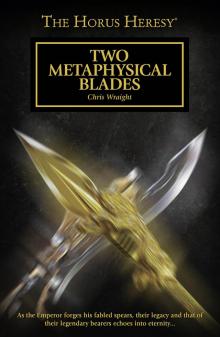 Two Metaphysical Blades
Two Metaphysical Blades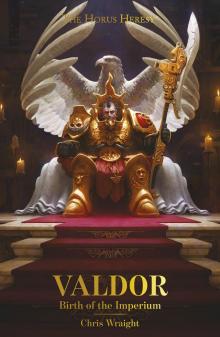 Valdor: Birth of the Imperium
Valdor: Birth of the Imperium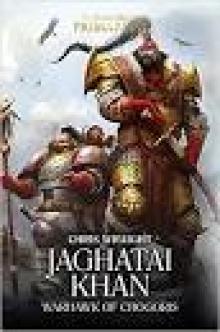 JAGHATAI KHAN WARHAWK OF CHOGORIS
JAGHATAI KHAN WARHAWK OF CHOGORIS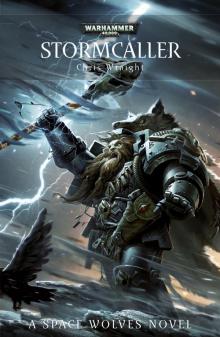 Stormcaller
Stormcaller Child of Chaos
Child of Chaos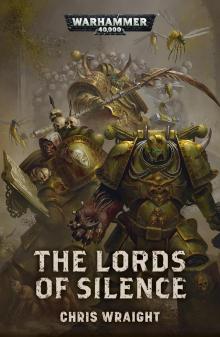 The Lords of Silence
The Lords of Silence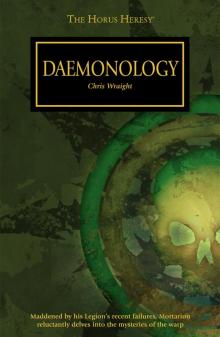 Daemonology
Daemonology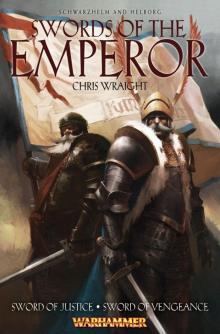 Swords of the Emperor
Swords of the Emperor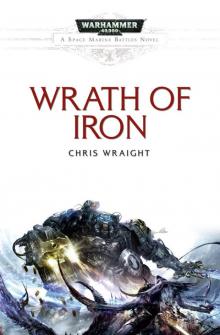 Wrath of Iron
Wrath of Iron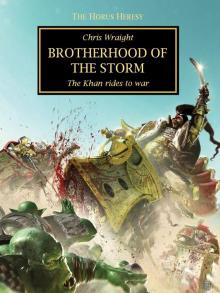 Brothers of the Storm
Brothers of the Storm Horus Heresy: Scars
Horus Heresy: Scars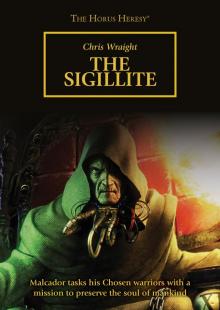 The Sigillite
The Sigillite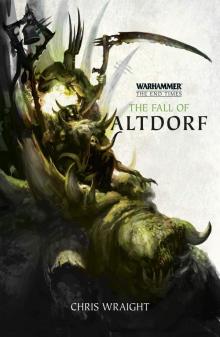 The End Times | The Fall of Altdorf
The End Times | The Fall of Altdorf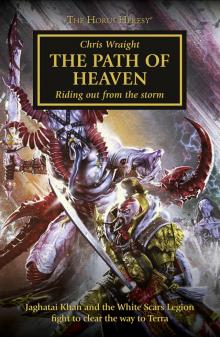 The Path of Heaven
The Path of Heaven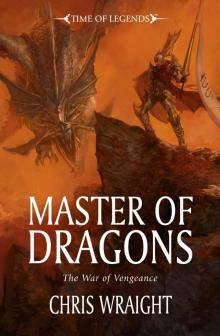 Master of Dragons
Master of Dragons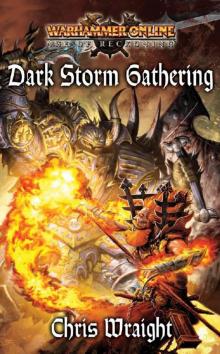 WH-Warhammer Online-Age of Reckoning 02(R)-Dark Storm Gathering
WH-Warhammer Online-Age of Reckoning 02(R)-Dark Storm Gathering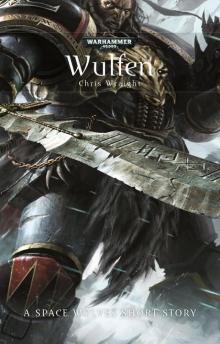 Wulfen
Wulfen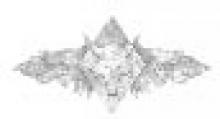 Battle Of The Fang
Battle Of The Fang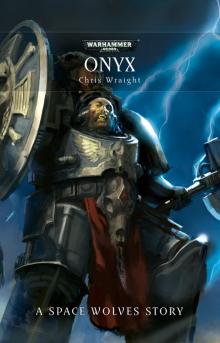 Onyx
Onyx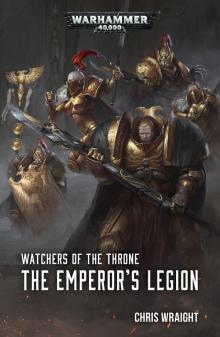 Watchers of the Throne: The Emperor’s Legion
Watchers of the Throne: The Emperor’s Legion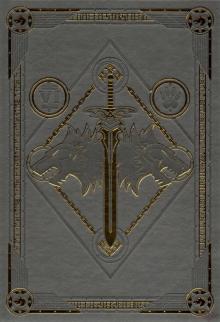 Leman Russ: The Great Wolf
Leman Russ: The Great Wolf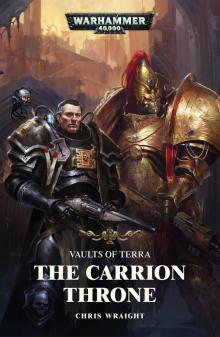 Vaults of Terra: The Carrion Throne
Vaults of Terra: The Carrion Throne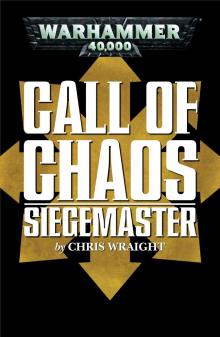 Siegemaster
Siegemaster STARGATE ATLANTIS: Dead End
STARGATE ATLANTIS: Dead End Scars
Scars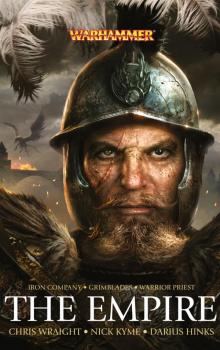 The Empire Omnibus
The Empire Omnibus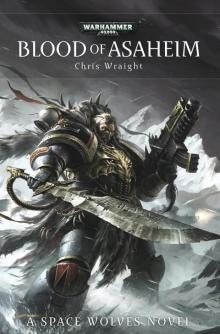 Blood of Asaheim
Blood of Asaheim